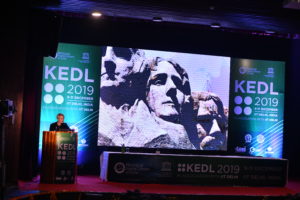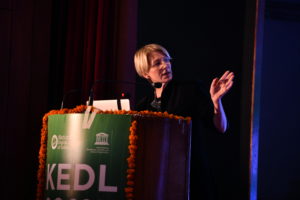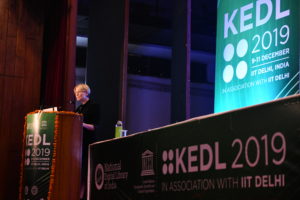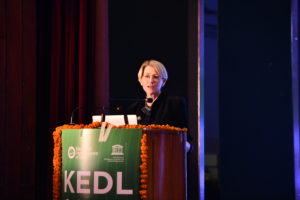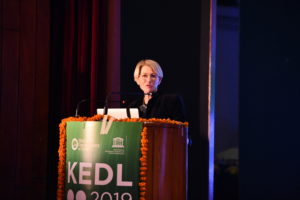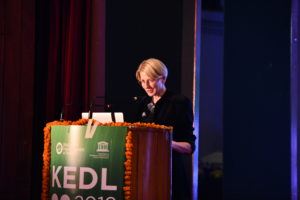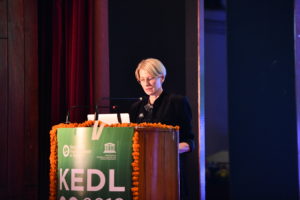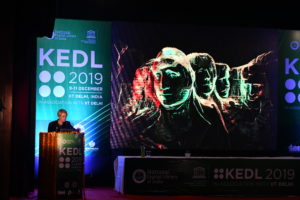9TH – 11TH DECEMBER 2019
SEMINAR HALL – IIT DELHI, INDIA
REPERTOIRES FOR ARCHIVES: REPERFORMING HISTORIES
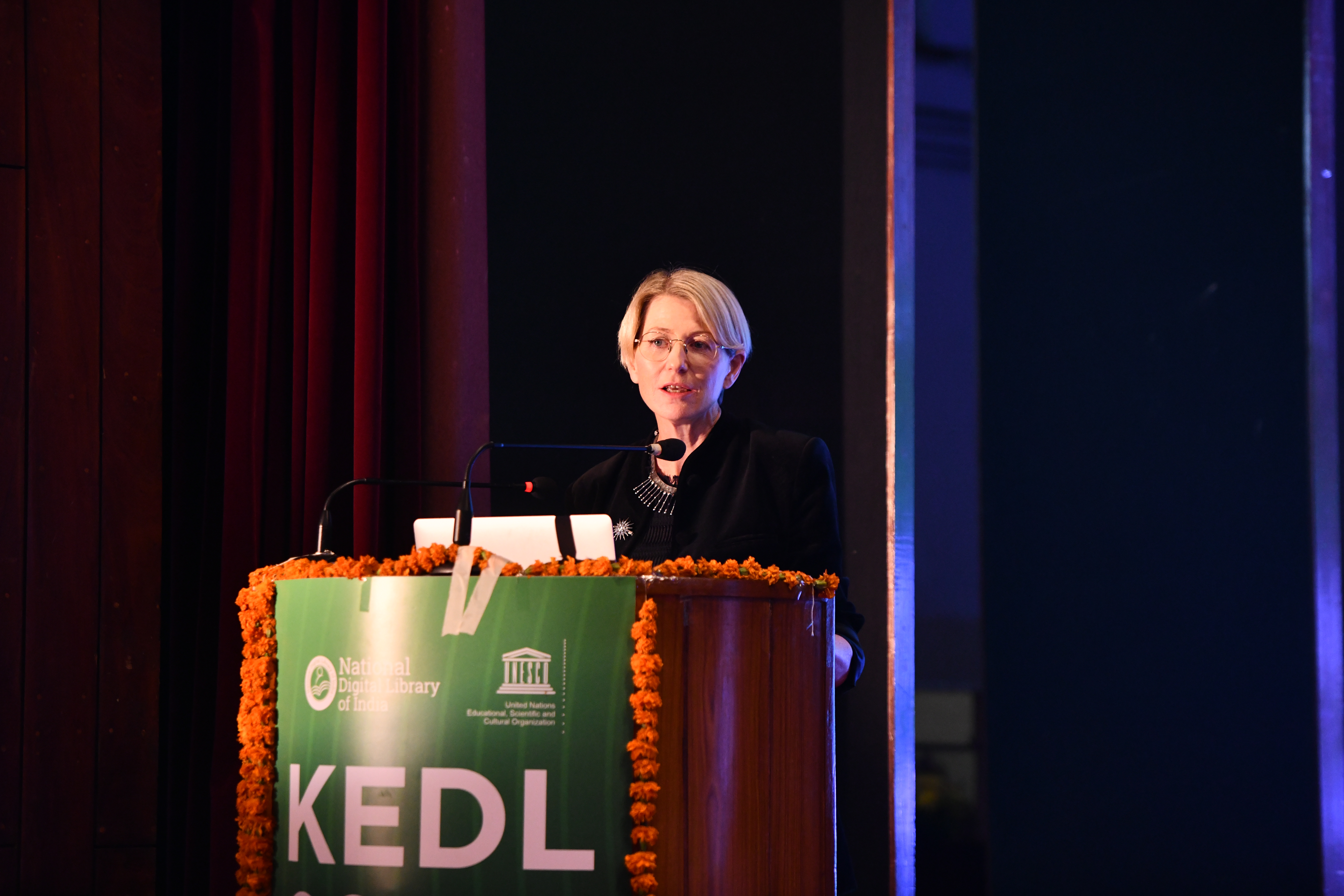
SARAH KENDERDINE
Professor of Digital Museolo
at the École polytechni ue
fédérale de Lausanne (EPFL),
Switzerland
11th Dec
9:00AM-9:40AM
Professor Sarah Kenderdine researches at the forefront of interactive and immersive experiences for galleries, libraries, archives and museums. In widely exhibited installation works, she has amalgamated cultural heritage with new media art practice, especially in the realms of interactive cinema, augmented reality and embodied narrative. She is considered a pioneer in the field digital heritage, digital museology, digital humanities and data visualisation. Sarah had authored numerous scholarly articles and six books. She has produced 80 exhibitions and installations for museums worldwide including a museum complex in India and received a number of major international awards for this work. In 2017, Sarah was appointed Professor of Digital Museology at the École polytechnique fédérale de Lausanne (EPFL), Switzerland where she has built a new laboratory for experimental museology (eM+), exploring the convergence of aesthetic practice, visual analytics and cultural data. She is also director and lead curator of EPFL’s new art/science initiative ArtLab, located in a seminal Kengo Kumar building inaugurated in 2016.
ABSTRACT
In 1889 the curator G. B. Goode of the Smithsonian Institute delivered an anticipatory lecture entitled ‘The Future of the Museum’ in which he said this future museum would stand side by side with the library and the laboratory.’ Convergence in collecting organisations propelled by the liquidity of digital data now sees them reconciled as information providers in a networked world. The media theorist Lev Manovich described this world-order as “database logic,” whereby users transform the physical assets of cultural organisations into digital assets to be—uploaded, downloaded, visualized, shared, users who treat institutions not as storehouses of physical objects, but rather as datasets to be manipulated. This presentation explores how such a mechanistic description can replaced by ways in which computation has become ‘experiential, spatial and materialized; embedded and embodied’. It was at the birth of the Information Age in the 1950s that the prominent designer Gyorgy Kepes of MIT said “information abundance” should be a “landscapes of the senses” that organizes both perception and practice. This “felt order” should be a source of beauty, data transformed from its measured quantities and recreated as sensed forms exhibiting properties of harmony, rhythm and proportion
Archives call for the creation of new prosthetic architectures for the production and sharing of archival resources. At the intersection of immersive visualisation technologies, visual analytics, aesthetics and cultural (big) data, this presentation explores diverse digital cultural heritage experiences of diverse archives from scientific, artistic and humanistic perspectives. Exploiting a series of experimental and embodied platforms, the discussion argues for a reformulation of engagement with digital archives at the intersection of the tangible and intangible and as a convergence across domains. The performative interfaces and repertoires described demonstrate opportunities to reformulate narrative in a digital context and they ways they support personal affective engagement with cultural memory.
Archives call for the creation of new prosthetic architectures for the production and sharing of archival resources. At the intersection of immersive visualisation technologies, visual analytics, aesthetics and cultural (big) data, this presentation explores diverse digital cultural heritage experiences of diverse archives from scientific, artistic and humanistic perspectives. Exploiting a series of experimental and embodied platforms, the discussion argues for a reformulation of engagement with digital archives at the intersection of the tangible and intangible and as a convergence across domains. The performative interfaces and repertoires described demonstrate opportunities to reformulate narrative in a digital context and they ways they support personal affective engagement with cultural memory.
—————————————————————————————————————————————————————————————————
Goode, G. B. (1891). The museums of the future. Report of the National Museum, 1888–’89, 1(1), 427–445. Pepi, M. (2014), ‘Is a Museum a Database?: Institutional Conditions in Net Utopia’,eFlux Journal: December 2014). Berry, D.& Dieter, M. (2015), Thinking Postdigital Aesthetics: Art, Computation and Design. Palgrave Macmillan. Kepes, G. (1956),The New Landscape in Art and Science. Chicago: Paul Theobald: 24. Halpern, O. (2014), Beautiful Data: A History of Vision and Reason since 1945. Duke University Press: 14.



